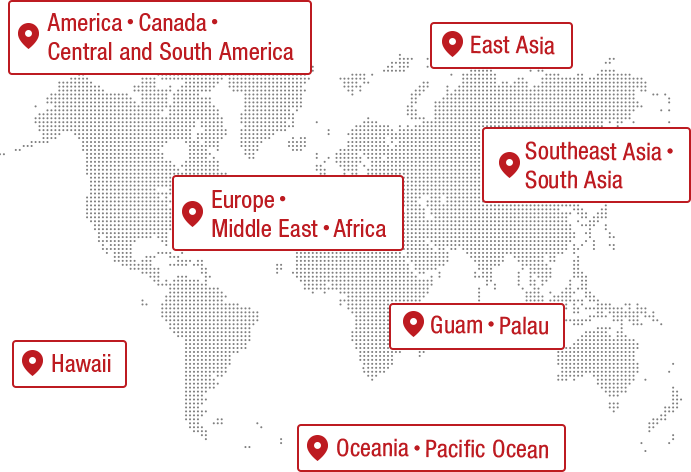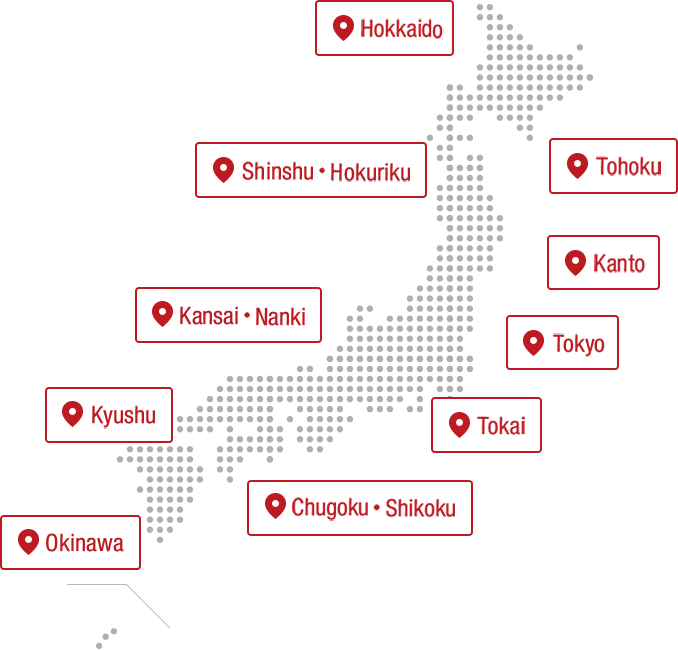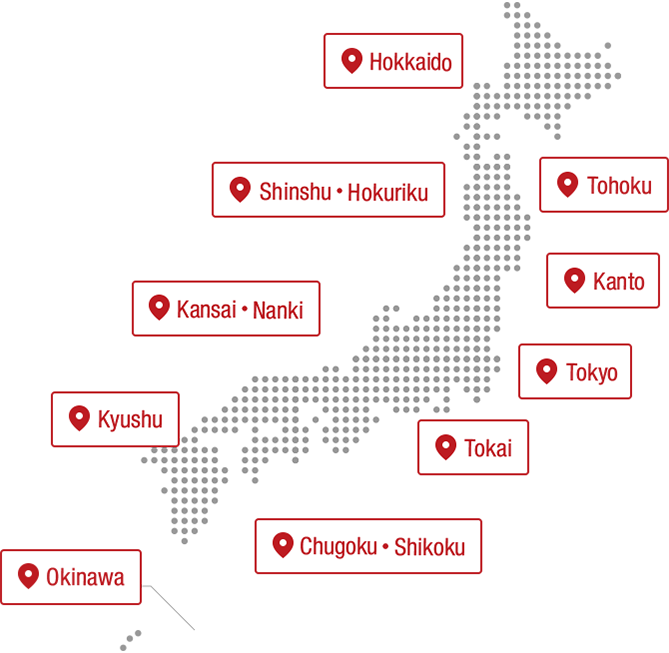Relax on the pure white sand beaches of Yoron Island
Yurigahama Beach, Kanebo Beach

Yurigahama, a very rare "sand beach accessible by boat"
Yurigahama Beach on Yoron Island is a pure white sand beach that appears every spring and summer at low tide from mid tide to spring tide. It is not a "coast" where land meets the sea, but a "small island" that appears on the sea surface only when certain conditions are met. If you take a boat for about 1.5km from Oganeku Beach and disembark with excitement, you will see blue skies, white clouds, and clear emerald green sea in every direction. It is a romantic beach, and there is a legend that says, "If you pick up star sand on Yurigahama Beach for each year of your age, you will be happy."

Beautiful sunset on the cum mother beach
Besides Yurigahama Beach, Yoron Island has many other pure white sand beaches. Kanebo Beach, located about a 10-minute walk from Yoron Airport, is also famous as a beautiful sunset spot. The unevenness in the sand seen in the photo above are the footprints of sea turtles, which are said to bring happiness. If you want to see sea turtles up close, we recommend visiting between October and December, when the chances of encountering them are said to be higher.
Akasaki Beach "Restaurant Misaki"
Akasaki Coast, located south from Oganeku Coast, is another beautiful beach with pure white sand. If you get tired of walking along the beach, you can take a break at Ajisaki, located right in front of Akasaki Coast. This restaurant is popular for its soba noodles and ochazuke, made with the specialty island mozuku seaweed. They also have shaved ice with unique names and appearances, such as Himitsu no Akko-chan, Megane, and Kaori. If you snap a photo, it's sure to be a photogenic one.

Ajisaki's shaved ice is colorful and full of tropical charm
Yoron Island has many white sand beaches because it was formed by the uplift of a coral reef. There are many beaches with beautiful waters, but a beach with sand as white as this is rare, and it is also known as the "Pearl of the Orient."
| Yoron Island Tourist Guide | ||
|---|---|---|
| web | : | http://www.yorontou.info |
| Restaurant Misaki | ||
|---|---|---|
| business hours | : | 11:00 - 18:00 (subject to change without notice) |
| Closed Day | : | Irregular holidays |
| address | : | 815 Mugiya, Yoron-cho, Oshima-gun, Kagoshima Prefecture (entrance to Akasaki Coast) |
Caving in Okinoerabu Island, the "Holy Land of Caves"
Caving

The Rimstone Cave is a course for beginners. You can see stalactites called "rimstones" that spread out like rice terraces. Stalactites hang down from the ceiling like icicles.
Okinoerabujima Island has 200 to 300 caves and limestone caves of various sizes, and is known among cave enthusiasts as a "holy land of caves." There is a tourist limestone cave called Shoryudo, where you can casually enjoy the atmosphere, but for those who want to enjoy it thoroughly, we highly recommend a caving (cave exploration) tour. You can experience the cave with your whole body by banging your head against rocks through a helmet, bending and passing through gaps in rugged rocks, and even getting immersed in water up to your waist and being swept away. For peace of mind, you can rent equipment such as helmets, headlights, and shoes on the tour.

Cave pearls are formed by using grains of sand as nuclei in shallow puddles. Drops of water falling into the puddle cause the grains of sand to rotate in the water, and as they grow, they become round like pearls, covered in stalactites.
Humpback whales also visit Okinoerabujima from January to March. Since the seawater temperature does not drop too much even in winter, you can enjoy whale watching and swimming with the whales.
Okinoerabujima is full of such charm, but for the people of the island, caves and humpback whales are commonplace and they don't seem to be that unusual. Perhaps that's why, even though it has many treasures, it hasn't become much of a tourist destination, which is one of the charms of Okinoerabujima. Why not explore the island where many "gems" are scattered all over?
| Okinoerabu Island Tourism Association | ||
|---|---|---|
| web | : | http://www.okinoerabujima.info |
Tokunoshima, the island of bullfighting and fertility. You can also enjoy two types of strangely shaped rock formations.
Dog gate cover, Mushirose

Inu no Monfuda's Glasses Rock
Meanwhile, in the northeast part of the island, there is a coast called Mushiro-se, which is made of granite, a type of igneous rock. The rugged rock surface, which is rare in tropical countries, looks like "mushiro" (a woven mat made of straw or rush grass), hence the name. The other three islands are almost entirely made up of coral reefs, so Tokunoshima is the only place where you can see such a granite landscape.

A unique landscape created by the granite of Mushirose
Battleship Yamato Memorial Tower (Inutabu Cape)
Cape Inutanbu, also known as a sunset spot, has a memorial tower dedicated to the Battleship Yamato, which sank at the end of World War II. It was built in 1968 because it was believed that the Battleship Yamato sank off the coast of Tokunoshima. Not only this memorial tower, but you will come across war sites everywhere when traveling around the Amami Islands. It is an unavoidable place to learn more about the history of Amami, which is close to Okinawa and where many military facilities were built.

Battleship Yamato Memorial Tower at Inutabu Cape
Bullfighting
Bullfighting has been popular among the islanders of Tokunoshima since the time it was under the control of the Satsuma Domain about 400 years ago. There are several bullfighting arenas on the island, with about 300 cows kept there. The islanders raise the cows with the same love and affection as if they were family, and you can see young men with innocent faces walking the cows on the beach and handling them as if they were adults.

Bullfighting is one of the symbols of Tokunoshima
By the way, Tokunoshima has many towns with high birth rates, and the airport is affectionately known as "Tokunoshima Kodomo Takara Airport." The people of Tokunoshima are so absorbed in raising their children and taking care of their cows that they don't seem to care much about tourists. The comfortable distance that doesn't bother you more than necessary is also appealing.
| Tokunoshima Tourism Federation | ||
|---|---|---|
| web | : | http://www.tokunoshima-kanko.com |
Kikaijima, where the unchanging "islander lifestyle" still thrives
The giant banyan tree, shrines and temples of Tekutsuku village
Kikaijima is home to many mystical banyan trees, which have played an important role for the islanders since ancient times as windbreaks for their homes.

The giant banyan tree in Tekutsuku village
One of these is the giant Gajumaru tree in Tekutsuku village, which is estimated to be over 100 years old. Its branches stretch out so that they seem to cover the sky, and its trunk measures 16 meters in circumference, are a sight to behold. Its extended aerial roots hang down in layers, making it hard to believe that it is a single tree. Filled with mysterious energy, it is the island's most powerful spot, and has been designated a natural monument by the town.

Sueyoshi Shrine (left), with a large moss-covered rock placed next to the torii gate, and Ukemiko Shrine (right), standing in the middle of a sugarcane field.
Speaking of power spots, Kikaijima is a small island with a circumference of just under 50km, yet it is home to a total of 52 shrines and temples. This shows that faith has been deeply connected to the lives of the people throughout the island's history. There are many shrines with unique appearances, such as shrines protected by lush trees and stone walls, and shrines in the middle of vast sugarcane fields, and their mysterious charm, combined with the power of nature, is even more impressive.
Coral Stone Wall

The bright pink morning glory vine stands out against the coral stone walls of Hanayoshi Village.
Walking around Kikaijima, you can see many stone walls made of piled coral to protect houses from typhoons and the tides. It seems that these "coral stone walls" used to be found on other islands in the Amami Islands, but they have almost disappeared now because they were thought to be inhabited by snakes. However, there are no snakes on Kikaijima, so the traditional stone walls remain to this day. The sight of ivy entwined around them and colorful flowers blooming gives you a real sense of the "subtropics teeming with life."
Kikaijima Island is home to ancient settlements, shrines, and trees. People may have lived in houses protected by coral stone walls and banyan trees, offered prayers at shrines, and endured the sometimes violent subtropical elements. Seeing this "island life" for the first time somehow feels nostalgic.
| Kikaijima Navi.com | ||
|---|---|---|
| web | : | http://kikaijimanavi.com |
The Amami Islands are a collection of islands with distinctive features. It's nice to take your time visiting each island, but by island hopping, you'll be able to experience the individuality of each island more clearly. Of the islands introduced here, Okinoerabujima, Tokunoshima, and Kikaijima are all served by Japan Air Commuter (JAC) flights from Amami Oshima. Yoronjima can be reached by JAC from Kagoshima, or by Ryukyu Air Commuter (RAC) from Naha.
When you think of southern islands, you may only think of summer, but the Amami Islands are subtropical, so the climate is relatively warm even in winter. During the upcoming off-season, there will be fewer tourists, so you can relax, and you may even be able to book hotels and flights at discounted rates. Why not take this opportunity to visit and enjoy the charms of each island?
keikei
In 2011, he traveled around Japan by motorcycle, and in 2015, he traveled around the world on a cruise ship. He has visited 24 remote islands in Japan so far. He is a writer who shares information about Japan and abroad on the website he manages.
Japanese Landscapes We Want to Preserve: www.tabi55.asia
Everyone's Sky: sky-over-the-head.link
I LOVE JAPAN: i-love-japan.info
To the Amami Islands, known as the Galapagos of the Orient
The contents published are accurate at the time of publication and are subject to change.












